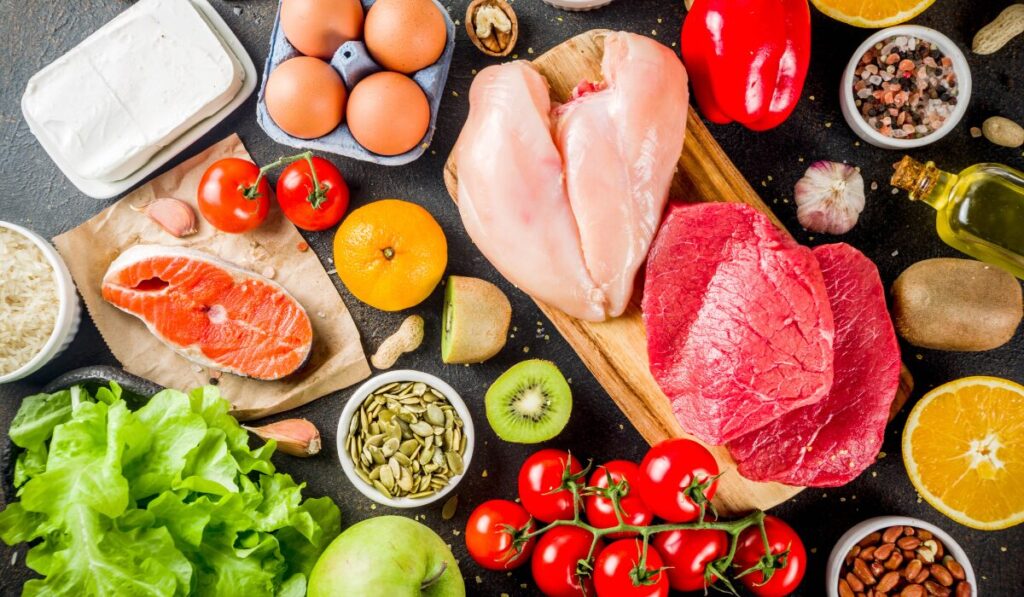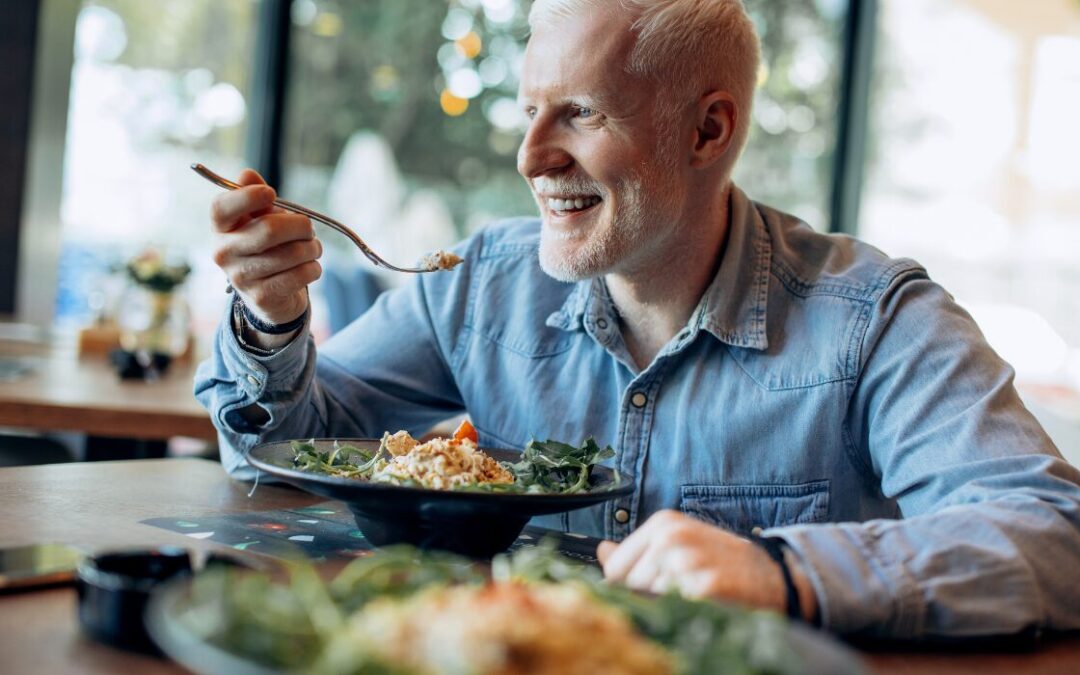Eating healthy doesn’t have to be complicated. You can make better food choices that boost your well-being with just a few straightforward steps. Here are eight easy tips to help you achieve a balanced diet and improve your overall health.
Eat a Variety of Foods
To get all the nutrients your body needs, include various foods in your diet. Incorporate colorful fruits, vegetables, whole grains, lean proteins, and healthy fats. This variety ensures that you receive essential vitamins, minerals, and other nutrients from multiple sources, which helps keep your body functioning optimally.
Choose Whole Grains
Whole grains are an excellent choice for a healthy diet. Unlike refined grains, which have been stripped of valuable nutrients and fiber, whole grains like brown rice, quinoa, oats, and whole-wheat bread retain their natural goodness. The fiber in whole grains helps with digestion, keeps you feeling full longer, and supports heart health.
Opt for Lean Proteins
Proteins are crucial for building and repairing tissues, but it’s important to choose lean options to avoid excessive fat. Good sources of lean protein include chicken breast, fish, beans, tofu, and low-fat dairy products. These options provide the necessary protein without the added saturated fat found in some other protein sources, like fatty cuts of meat.
Incorporate Healthy Fats
Fats are an essential part of a balanced diet, but it’s important to choose the right types. Healthy fats, found in foods like avocados, nuts, seeds, and olive oil, support brain function and heart health. Avoid trans fats and limit saturated fats, which can increase your risk of heart disease. Healthy fats also help you absorb certain vitamins and keep your skin looking good.
Watch Your Portion Sizes
Managing portion sizes is key to maintaining a healthy weight and avoiding overeating. Be mindful of the amount of food you put on your plate and try to eat slowly to give your body time to signal when it’s full. Using smaller plates and bowls can help control portions, and listening to your hunger cues can prevent unnecessary snacking.
Stay Hydrated
Drinking enough water is crucial for overall health. Water helps with digestion, keeps your skin healthy, and regulates body temperature. Aim for about 8 cups of water a day, but remember that individual needs can vary based on factors like activity level and climate. Herbal teas and water-rich foods like fruits and vegetables also contribute to your daily hydration needs.
Limit Added Sugars and Salt
Excessive added sugars and salt can lead to health issues such as high blood pressure and diabetes. Check food labels for hidden sugars and sodium, and try to limit your intake of processed and sugary foods. Instead, use herbs, spices, and natural flavorings to enhance the taste of your meals without relying on extra salt or sugar.
Plan Your Meals
Meal planning can make a big difference in eating healthily. By planning your meals and snacks ahead of time, you can make more nutritious choices and avoid the temptation of unhealthy options. Preparing meals in advance, creating a shopping list with healthy items, and cooking at home more often can save time and help you stick to your dietary goals.
Paleo vs. Keto Diet

When it comes to popular diets, the Paleo and Keto diets are often discussed. Here’s a brief comparison to help you understand their key differences:
Paleo Diet
The Paleo diet focuses on eating like our ancient ancestors. It emphasizes whole, unprocessed foods such as:
- Meats: Grass-fed beef, poultry, and fish
- Fruits and Vegetables: A wide variety of fresh produce
- Nuts and Seeds: Almonds, walnuts, chia seeds
- Healthy Fats: Avocados, olive oil
The Paleo diet excludes processed foods, grains, dairy, and legumes. It aims to reduce inflammation and improve health by sticking to foods that were available before modern agriculture.
Keto Diet
The Keto diet is a low-carb, high-fat diet designed to put your body into a state of ketosis, where it burns fat for fuel instead of carbohydrates. Key components include:
- High Fat: Avocados, butter, and coconut oil
- Moderate Protein: Meat, fish, and eggs
- Very Low Carbs: Leafy greens, berries in moderation
The Keto diet restricts most carbohydrates, including fruits, starchy vegetables, and grains. Its primary goal is to achieve ketosis for weight loss and energy.
Conclusion
Adopting a healthier eating pattern doesn’t have to be difficult. By following these eight straightforward tips—eating a variety of foods, choosing whole grains and lean proteins, incorporating healthy fats, managing portion sizes, staying hydrated, limiting added sugars and salt, and planning your meals—you can make positive changes that support better health and well-being.
Choosing between diets like Paleo and Keto depends on your personal goals and preferences. Both have their benefits, but understanding how they fit with your lifestyle can help you make the best choice for your health. Remember, it’s not about perfection but about making consistent, manageable improvements. Start with a few changes, and gradually build on them to create a balanced and enjoyable way of eating. Each small step you take will contribute to a healthier, more vibrant you.
Frequently Asked Questions (FAQs)
What are some easy ways to incorporate more whole grains into my diet?
You can start by swapping white bread or pasta with whole-grain versions, using brown rice instead of white, and trying grains like quinoa or barley in salads and side dishes.
How much protein do I need each day?
Protein needs vary based on factors like age, gender, and activity level. Generally, adults should aim for 46-56 grams of protein per day. It’s best to consult with a healthcare professional for personalized recommendations.
What are some quick and healthy snack options?
Some great snack options include fresh fruits, a handful of nuts, yogurt, veggie sticks with hummus, or whole-grain crackers with a slice of cheese.
How can I reduce my sugar intake without feeling deprived?
Gradually cut back on sugary drinks, opt for natural sweeteners like honey in moderation, and satisfy your sweet tooth with fresh fruits instead of processed desserts.
Is it okay to have cheat meals occasionally?
Yes, occasional indulgences are fine as part of a balanced diet. The key is moderation and returning to healthy eating habits afterward.
What are some tips for staying hydrated if I don’t like plain water?
You can infuse water with fruits, cucumber, or herbs for added flavor, drink herbal teas, or consume water-rich foods like watermelon and cucumbers to stay hydrated.
How can I make meal planning easier?
Start by setting aside time each week to plan your meals, create a shopping list, and prepare ingredients in advance. Batch cooking and using leftovers creatively can also save time.
Which diet is better for weight loss: Paleo or Keto?
Both diets can be effective for weight loss, but it depends on your preferences and how your body responds to each. Keto is more focused on achieving ketosis through low-carb intake, while Paleo emphasizes whole, unprocessed foods. It’s important to choose a diet that aligns with your lifestyle and goals. Consulting a healthcare provider can also help you decide.

